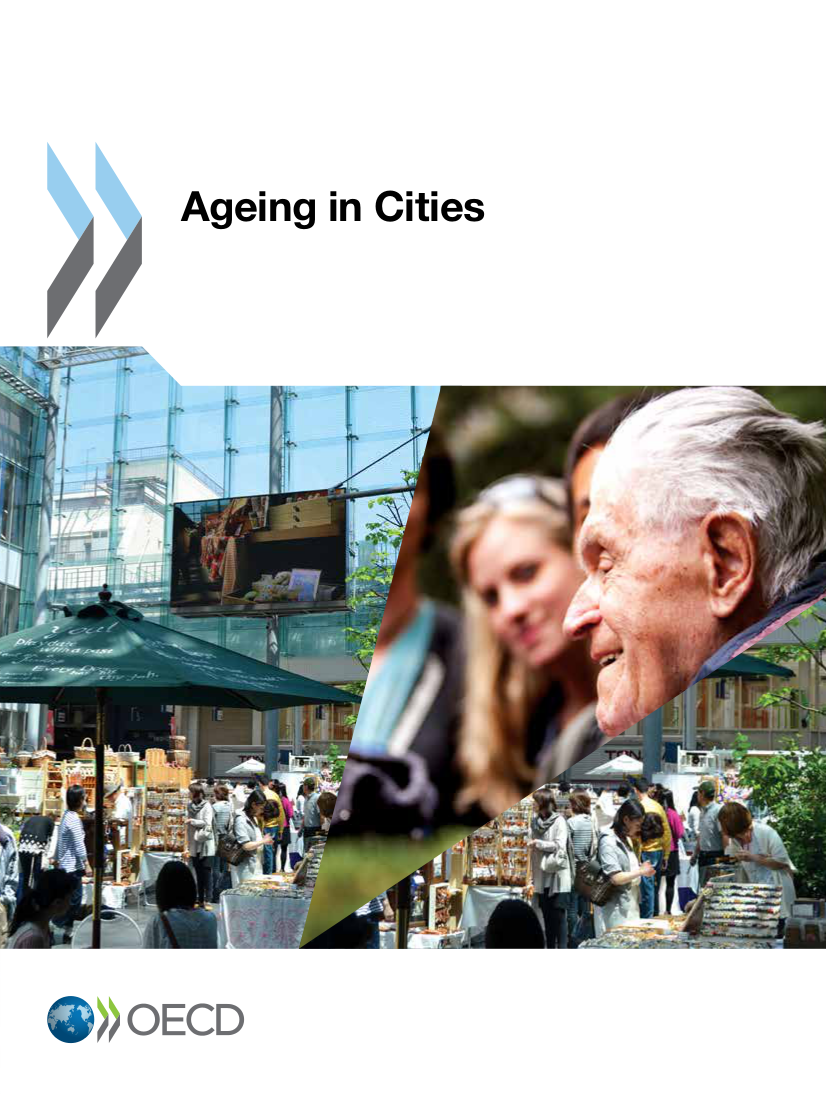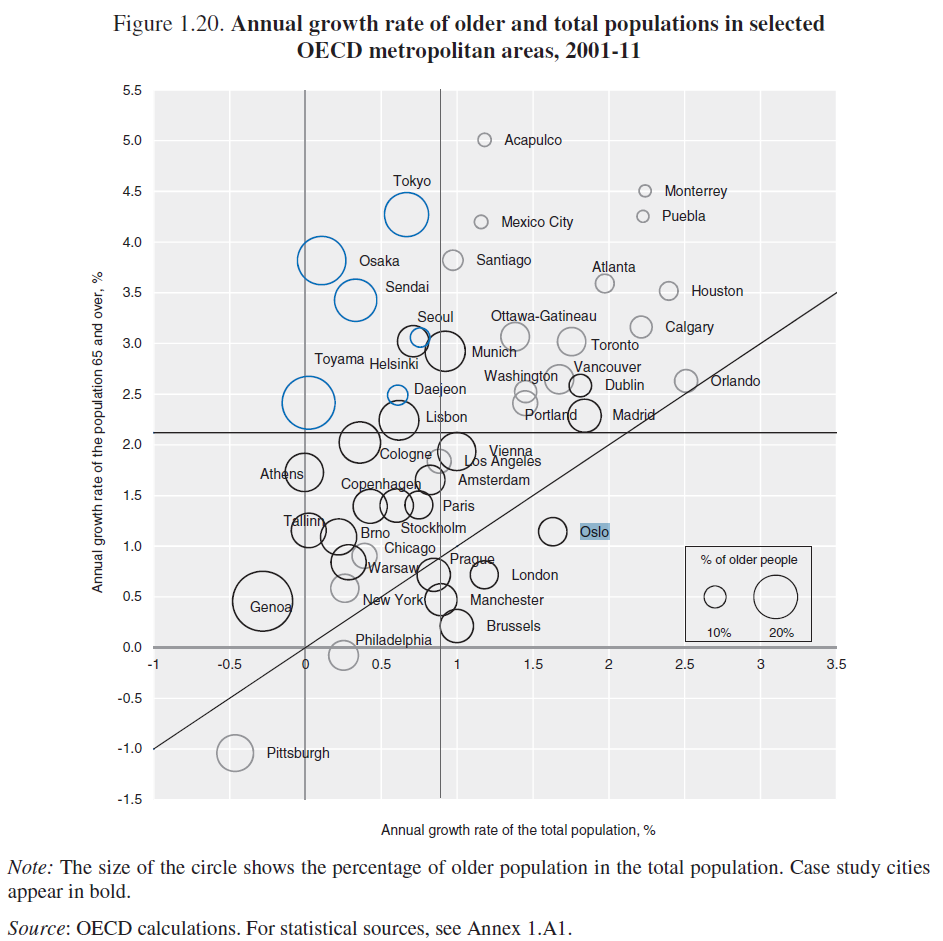
OECD new report explores the roles of cities on ageing societies by answering an important question: “How are urban populations ageing?”
One of the main findings on this report is the fact that within OECD metropolitan areas, the older population is growing faster than the total population.
The report also shows that ageing trends are different between OECD metropolitan areas (functional urban areas) and non-metropolitan areas. While metropolitan areas are marginally younger than non-metropolitan areas, the number of older people is increasing faster: 23.8 % vs. 18.2 % during 2001-2011.
As we discussed previously, Oslo (see figure) is following a different trend in comparison to other OECD metropolitan areas.

OECD metropolitan areas, 2001-11
While Japanese and Korean metropolitan areas feature an average annual growth rate of -0.04% for the total and 2.7% for the population of older people, the range of these growth rates is rather narrow compared to metropolitan areas in Europe and the Americas (Canada, Chile, Mexico and the United States).
The larger metropolitan areas register higher growth rates of older people in urban
cores than in hinterlands, whereas smaller metropolitan areas display the reverse . In metropolitan areas with fewer than 10 million inhabitants, the growth rate of older people in hinterlands outpaces urban cores by 0.5-1.1% for 2001-11.
The reports highlights the idea that although ageing societies pose diverse challenges, it also offers opportunities, such as new developments in technology and innovation; market approaches to retrofit existing housings that allow older people to maintain or regain their autonomy; and the organisation of services for older people by older people in voluntary networks.
You can read the report here.
